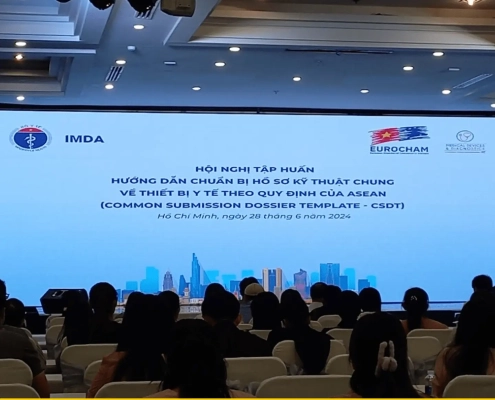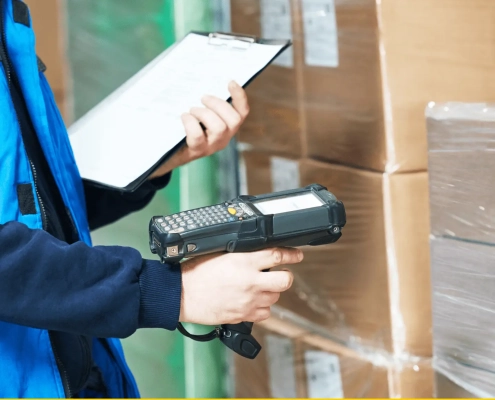Come grow with us in the US in Thailand in China in Korea in the Philippines in Taiwan in Hong Kong
Contact Us
US: +1 512 898-9222
SG: +65 3138-4148
EMAIL: Inquiry@asiaactual.com
Important Documents and Links
Thailand Issues Guidance on Software (SaMD) Registration
Published: June 17th, 2024
On May 9th, 2024, the Thai Food and Drug Administration (TFDA) issued guidance regarding registration of Software as a Medical Device (SaMD) in Thailand. Regulatory systems around the world struggle with applying regulatory structure to software due to its unique characteristics. Any guidance that helps bridge the gap between bureaucratic regulations and innovative devices is welcome information. Manufacturers and importers of SaMD products now have guidance to reduce uncertainty and time to market in Thailand.
Software Classification for Medical Devices
The Medical Device Control Division of the Food and Drug Administration (FDA) is responsible for overseeing medical technology products, from pre-market approval to post-market surveillance, including advertising permissions. To assist in determining the regulatory status of their products, the FDA has developed clear guidelines to ascertain whether software qualifies as a medical device. For medical purpose consideration, software must be specifically intended for human or animal use to diagnose, prevent, monitor, treat, or alleviate disease, injury, or physiological conditions (see more on intended use in Sec. 4 of the Medical Device Act). Different types of medical device software are outlined in the criteria provided below.
Types of Software in Medical Devices
Embedded Software: Embedded software refers to software that is integrated into a medical device itself, playing a fundamental role in its functionality.
Standalone Software: Standalone software, including mobile applications, can operate independently and is not designed to control or impact the hardware of medical devices.
Software Accessories: Software accessories are supplementary tools used in conjunction with medical equipment, enhancing their functionality or providing additional features.
Non-Medical Device Software: Software that does not serve a medical purpose and is not intended for use in diagnosis, treatment, or prevention of disease falls under this category.
Determining Risk Classification
The first step in the SaMD registration process is identifying the risk classification of the product. This classification informs the necessary documentation and regulatory requirements. SaMD can fall into Class 1 or Classes 2-3, each requiring distinct sets of documents for registration.
Class 1 SaMD in Thailand
For Class 1 SaMD, manufacturers or importers must submit a notification request along with essential documents such as:
- Medical Device Labels: Detailed labeling information according to regulatory guidelines.
- Documents Accompanying Medical Devices: Including labels and associated documents.
- Product Details: Specifications, characteristics, and materials used.
- Power of Attorney: If applicable, for importation purposes.
- Certificate (Declaration) of Conformity: Demonstrating compliance with regulatory standards.
- Documentation of Foreign Registration: If the product is registered abroad.
Class 2 and 3 SaMD in Thailand
For SaMD classified as Classes 2-3, a more comprehensive set of documents is required, including:
- Medical Device Labels and Documents: As per regulatory specifications.
- Documents Accompanying Medical Devices: Include all necessary documents accompanying your medical devices, aligning with regulatory standards.
- Summary About Medical Device: Provide a concise summary outlining the key features and functionalities of your medical device
- Details of Medical Devices: Offer comprehensive details regarding the general characteristics, working principles, purposes of use, indications, warnings, and precautions associated with your medical device.
- Essential Principle: Demonstrate adherence to essential principles governing the design and functionality of medical devices.
- Summary Verification & Validation: Conduct thorough verification and validation processes to ensure the reliability and effectiveness of your medical device.
- Document Showing Risk Analysis: Present a detailed analysis of the risks associated with your medical device, along with mitigation strategies.
- Document Showing Manufacturing Details: Provide information regarding the name and location of the medical device manufacturing facility, along with pertinent manufacturing information or product owner details.
- Document Showing Disposal Procedures: Outline procedures for the safe disposal or elimination of waste generated after the use of your medical device, if applicable.
- Certificate of ISO/GMP Production Quality System: To demonstrate adherence to ISO/GMP production quality standards.
- Certificate of Purpose of Use and Indications: Provide certification detailing the purpose of use, indications, packaging, and method of use, if applicable.
- Certificate (Declaration) of Conformity: Demonstrating compliance with regulatory standards.
- Certificate Showing Sales History: If relevant, provide certification showing the sales history of your medical device (C.P.P.) (if applicable).
- Safety Certificate (if applicable)
- Document Showing Registration History Abroad: In cases where registration has been conducted abroad, furnish documentation outlining the registration history.
- Power of Attorney: For importation purposes, obtain a power of attorney from the product owner to act as a representative (Letter of Authorization for Authorized Representatives).
Additional Notes:
- Cybersecurity and Data Protection: Devices connected to external systems must uphold cybersecurity standards and protect personal data in line with relevant legislation.
- AI and ML Transparency: Transparency in AI/ML processes is crucial to ensure fairness, efficiency, and adherence to intended use.
In conclusion, navigating SaMD registration requires meticulous attention to detail and adherence to regulatory guidelines. Manufacturers and importers need to approach risk classification and documentation thoroughly to remain compliant.
Come Grow with Us
Please contact Asia Actual with any questions or requests for support in Thailand. We have offices staffed by experienced, bilingual regulatory and commercial professionals in the major capital cities of Asia. Our mission is to provide a stable, reliable local platform so that our clients can grow their sales in challenging Asian markets.






